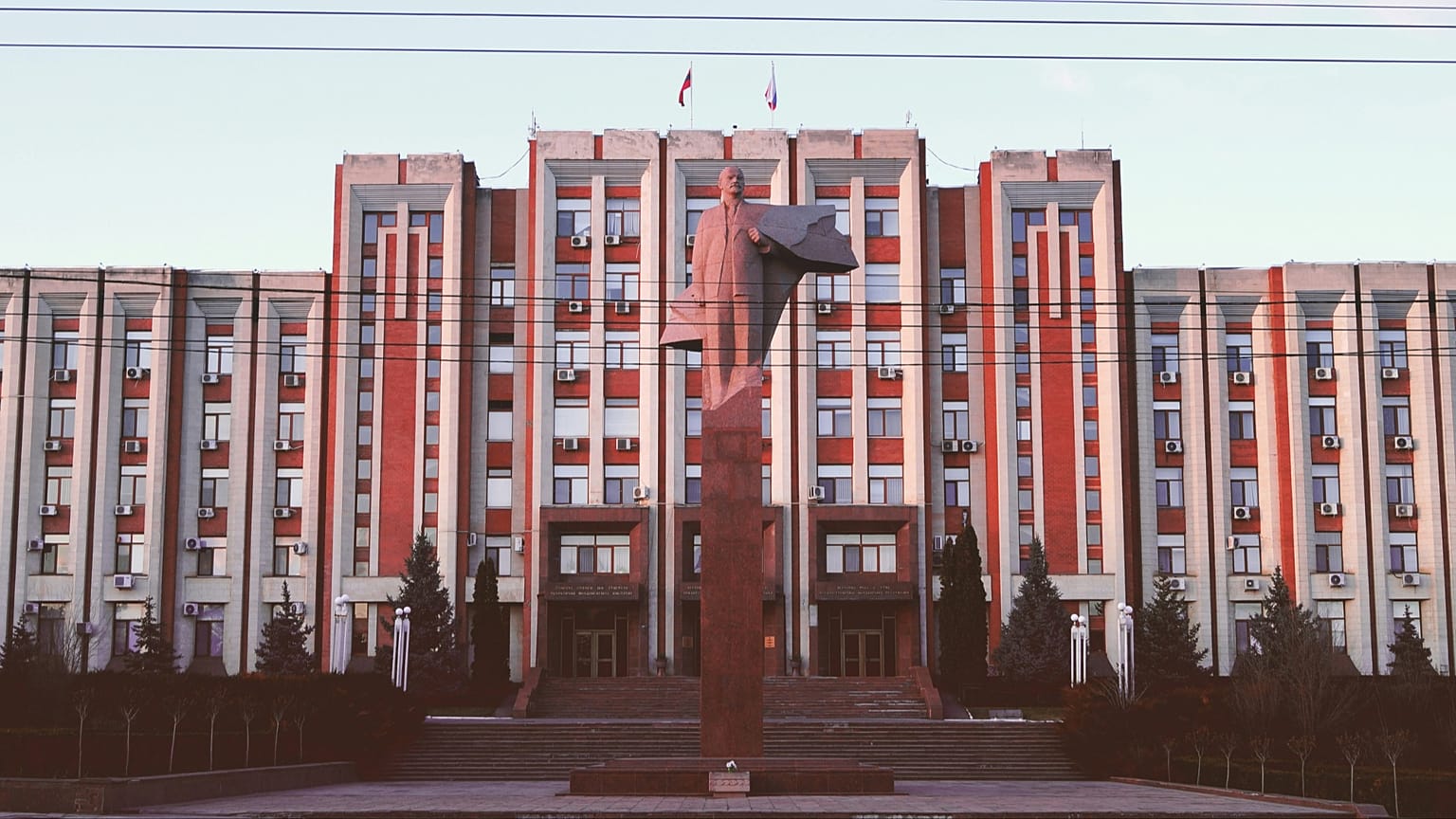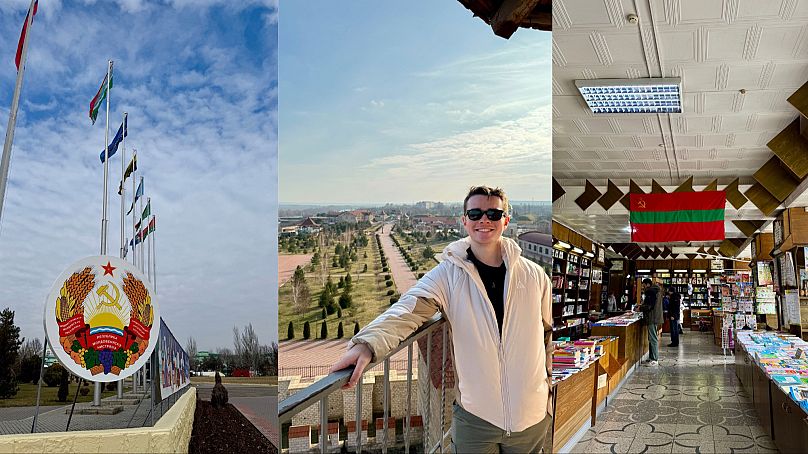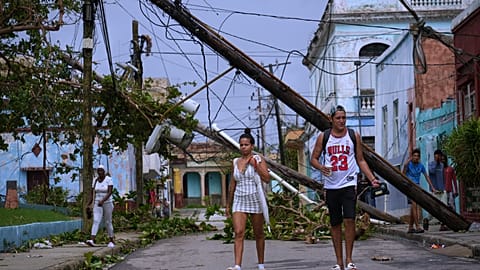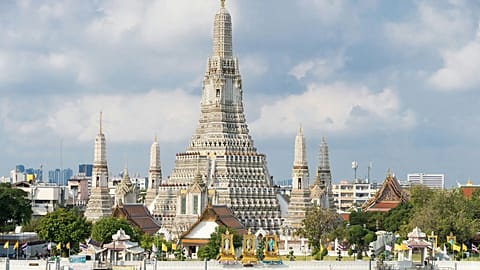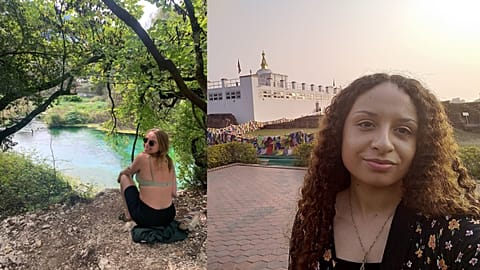The mini Soviet nation remains internationally unrecognised, but it seems tourists can’t get enough.
Soaring statues of Lenin, postcards of Putin, and a tourist-filled T-34 tank: it’s a trifecta you’ll only find in Europe’s most notorious breakaway state.
Officially known as the Pridnestrovin Moldovian Republic, Transnistria broke away from Moldova in 1990 over fears the country would reunite with Romania following the collapse of the Soviet Union.
The de facto government is not recognised internationally, with all of Europe still classing the separatist region as a part of Moldova.
Now infiltrated by around 1,500 Russian soldiers due to its economic and political ties and despite official warnings not to visit, the breakaway state has unexpectedly become a huge hit with Western travellers.
Is Transnistria seeing a tourism boom?
Verifying Transnistria’s tourism statistics is a challenge. Moldova’s tourist board didn’t respond when contacted by Euronews Travel about official figures.
However, the State Customs Committee of the Pridnestrovian Moldavian Republic (PMR) says the number of incoming tourists has “doubled over the past two years”.
While it failed to provide any specific numbers, a report published in 2020 estimated that around 20,000 tourists flock to the region as part of a day-trip from Moldovaevery year.
Transistria has also released its first-ever traveller’s guide, which is available in both Russian and English.
The memo includes information on duty-free allowances, prohibited goods, and instructions on how foreigners can bring their vehicles into the breakaway state.
Recently, videos of Transnistria’s unusual tourist sights have also gone viral on TikTok, with more than five thousand posts being tagged under “#Transnistria”. Creators visiting the self-declared state have been showcasing its Soviet-era architecture and unique history, often under the banner of visiting the ‘place that doesn’t exist’.
‘Stepping into a time machine’
Harry Tully is one of the many content creators who documented his time in Transnistria after booking a Soviet-style sleeper train from Romania to Moldova. Known as @exploringwithharry online, his videos on the breakaway state have received hundreds of thousands of views on TikTok.
The 25-year-old says he’s often drawn to “off-the-beaten track” destinations and wanted to explore a different side to Europe than the usual hotspots. Last year, Moldova recorded 67,631 foreign visitor arrivals.
While this marks a 55.1 per cent increase compared to 2023, it’s a huge contrast from the likes of Spain, which welcomed a record-breaking 94 million international tourists last year.
Tully, from Cambridge, says a trip to Transnistria feels like you’ve “stepped into a time machine” and is the perfect place for any history “nerds” interested in the Soviet Union.
One of his highlights is Bendery Fortress, a 15th-century structure on the right bank of the Dniester River, and having lunch at the USSR canteen in the centre of Tiraspol.
“It’s covered in Soviet memorabilia,” he tells Euronews Travel. “It’s old, it’s damp, and you can see black mould growing on the walls, but it’s all part of the experience!
“Soviet music plays on the speakers and the food is traditional Soviet style, consisting of meat, vegetables and lots of pickled things.”
Tully also visited a small bookshop called “House of Book” which has also sparked intrigue across social media. Here, you’ll find souvenirs featuring pictures of Vladimir Putin, ranging from posters to fridge magnets.
Is it safe to visit Transnistria?
The UK’s Foreign, Commonwealth and Development Office(FCDO) currently advises against all forms of travel to Transnistria due to widespread military activity in Ukraine being close to Transnistria’s borders, as well as the risk of power blackouts.
“FCDO’s ability to offer support is extremely limited and will be more limited if there is military action on or near the Moldova-Ukraine border,” the body states.
Tully says he was aware of the travel warnings, which can invalidate your travel insurance, but decided to go ahead with the trip after doing his own research.
“My family thought I was crazy and having an early midlife crisis,” he says.
“I must admit I was a little nervous as I arrived at the border, where I was met with Russian tanks, soldiers and border guards who asked about the reason for my visit.”
Despite the large Russian military presence, Tully says he had no issues at any of the checkpoints or with the troops patrolling the streets.
“You just have to be sensible and respect the rules,” he adds. “The trip really showed me that you can’t judge somewhere until you have seen it yourself.”
Having visited other unusual destinations such as Kazakhstan, Uzbekistan and Armenia, Tully says tourists need to understand that a country’s government and a country’s people are “two very different things”.
Are travel trends changing?
Deepak Shukla, CEO of Pearl Lemon Adventures, says travellers are getting tired of the same “picture-perfect” places, which is helping destinations like Transnistria gain momentum.
“It’s like walking into a parallel version of the past,” he says. “There are Soviet monuments, old propaganda signs, streets that haven’t quite caught up with the rest of Europe - it’s all weirdly fascinating.”
The expert recommends that all visitors use official entry points, have a copy of their travel documentation with them, and refrain from taking photos of anything military or government-related.
“ATMs are hit or miss, so having some cash (Moldovan lei or US dollars) makes life easier,” Shukla adds.
Despite tension between Transnistria and Moldova, the country’s official tourist board still offers advice on visiting the region on its website.
It details local tour companies that offer day-trips to Transnistria’s most important city of Tiraspol and highlights Bendery Fortress and Soviet statues as must-see attractions.
“If you have a valid visa to the Moldovan region then you are also allowed to visit the Transnistrian region and EU and US citizens are allowed visa-free travel to the Transnistrian region,” the board says.
However, under its safety and security page, the organisation warns that explosions went off in the Transnistrian region in May this year.
“The source of these explosions and disruptions are still unresolved and the Moldovan government is working to maintain peaceful relations,” it states.
“Therefore, we do not recommend that any travellers visit Transnistria at this time as the Republic of Moldova cannot ensure safety there.”
The site includes a statement from the government of the Republic of Moldova which also recommends “avoiding travel” and “carrying out planned activities” in the region.
Moldova’s Tourist Board did not respond to Euronews Travel when asked why it was providing guides on how to visit Transnistria despite multiple travel warnings.
Does tourism help locals?
While many tourists will be deterred by Transnistria's allyship with Russia, Shulak argues that “most locals have nothing to do with politics”.
“They’re just trying to make a living, and the traveller who comes in, spends money, supports small business owners and guides are helping.”
Still, on social media, many travellers said visiting the breakaway state was falling for “pro-Russian propaganda” and glorifying the “communist aesthetic”.
One Moldovan named Felis wrote: “I get the fascination with visiting a space that is this stuck in time but for those planning to go please consider that the separatist region’s government was keeping its population in the cold at the start of January, because they did not want to accept aid from the EU or have talks with Moldova.”
Another commented: “You're basically on Russian occupied territories and completely at their mercy.”















